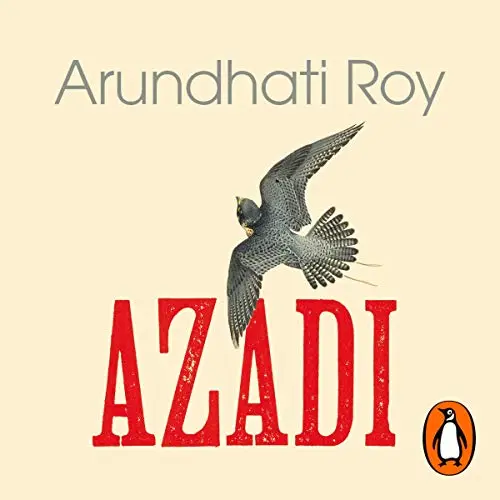Arundhati Roy undoubtedly has literary qualities of the highest order. An acclaimed activist, a voice of dissent against fascism in a turbulent world and an author. Arundhati Roy’s journey has not been an easy one. Previously, Roy was accused of sedition for her engagement with Kashmir. Roy’s continuous venturing into the shadowlands of India, bringing forward stories which many do not take kindly to, she has kept up to her reputation of putting forward unsettling realities in her essays once again.
“Azadi: Freedom. Fascism. Fiction” fashions facts which intense anti-fascist rhetoric. The book builds upon Roy’s previous work, a collection of nine non-fiction essays published in 2019. In “My Seditious Heart”, she points out the propagated Hindu fundamentalism in the current BJP’s government.
Arundhati Roy’s Discussion on Fascism
Moreover, Arundhati talks about the rise of Hindu nationalism and the rise and fall of European fascism. She Highlights that fascism is by no means the same everywhere. However, she then questions, why is fascism so recognizable across histories and cultures? It’s not just the fascists that are recognizable—the strong man, the ideological army, the squalid dreams of Aryan superiority, the dehumanization and ghettoization of the “internal enemy,” the massive and utterly ruthless propaganda machine, the false-flag attacks and assassinations, the fawning businessmen and film stars, the attacks on universities, the fear of intellectuals, the specter of detention camps, and the hate-fueled zombie population that chants the Eastern equivalent of “Heil! Heil! Heil!”
It’s also the rest of society—the exhausted, quarrelling opposition, the vain, nit-picking Left, the equivocating liberals who spent years building the road that has led to the situation humans find themselves in. Arundhati implicates that we humans are now behaving like shocked, righteous rabbits. Rabbits who never imagined that they were an important ingredient of the rabbit stew that was always on the menu. Likewise, she reminds us to not forget about the wolves who ignored the decent folks’ counsel of moderation; and sloped off into the wilderness to howl unceasingly, futilely—and, if they were female, then “shrilly” and “hysterically”—at the terrifying, misshapen moon.
Roy discusses Hindu Nationalism in light of European Fascism
Arundhati points out that, in an age where optimism and pessimism are intertwined and are akin to the life and death of Schrodinger’s cat, makes one skeptical. Pinning down hopes on any society or nation to act differently also has its reservations. The world no stranger to the political power of words, and language. Arundhati indicates that in 2021, we are more susceptible to these than ever. It is perhaps the very reason, behind innocence framing taking over agenda-setting in the media. Roy suggests that this applies to most debates that have been politically or morally charged.
This is what Roy explores in Azadi: Hindu nationalism which is unfolding as a piece of a jigsaw puzzle. She discusses the puzzle in two aspects, the resurgence of the far-Right worldwide, and where it is taking this world. She further discusses the absurdity of Hindu Nationalism. Roy calls out the “doctrine of One Nation, One Language, One Religion, One Constitution” being imposed on a region that is “not a country”. However, it is rather a “continent” – “more complex and diverse, with more languages – 780 at last count, excluding dialects… than all of Europe”. The India Roy wants us, as well the policymakers to acknowledge, is a “vast ocean”, a “fragile, fractious social ecosystem”.
Arundhati Roy on ‘freedom’ the Voice of Kashmir
Azadi, which translates to “freedom”, is the cry which has rung loud in Kashmir, more than once. In the essay The Silence Is the Loudest Sound, she writes, “What India has done in Kashmir over the last 30 years is unforgivable.”. An estimated 70,000 people – civilians, militants and security forces – have been killed in the conflict. This is around the same number of people who lost their lives in Pakistan over the past decade or so. This was due to the War on Terror. Roy also talks of the thousands of cases of enforced disappearances. She indicates in her writing “tens of thousands have passed through torture chambers that dot the valley like a network of small-scale Abu Ghraibs.”
“I have often caught myself wondering, if I were to be incarcerated or driven underground, would it liberate my writing? Would what I write become simpler, more lyrical perhaps, and less negotiated?” Roy asks herself in one of her essays, The Graveyard Talks Back. Roy writes words that resonate within oneself. She underlines the fact that liberation lies in negotiations. Arundhati continues to state that \”Hope lies in texts that can accommodate and keep alive intricacy, our complexity, and our density against the onslaught of the terrifying, sweeping simplifications of fascism.”
What Arundhati Roy\’s discussion has produced, in Azadi, is a beautiful amalgamation of worlds, of camaraderie and that of humanism. She is a writer who is capable of producing far more powerful works. Arundhati Roy\’s Azadi proves to be one of her writings that works wonders in the fiction-nonfiction binary.
Komal Salman, a multifaceted professional with experience spanning graphic design since undergraduate studies, media production, indie authorship, and artistry, brings a rich storytelling perspective to her work.




Add a Comment